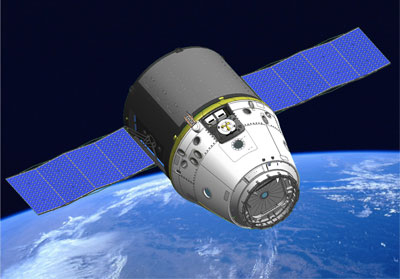Alternatives for human space accessby Taylor Dinerman
|
| Keeping the shuttle alive will cost anywhere from four to five billion dollars a year in additional spending, even if they launch only two or three times a year. Bumping NASA’s overall budget to 23 billion dollars or more may not be politically feasible. |
It will take considerable time and money to develop these systems, but time may be the one thing that US politicians do not want to give the space agency. Russia’s invasion of Georgia has changed the situation and even without a future crisis it will be very hard for NASA to ask Congress to fund future Soyuz flights for US passengers to the International Space Station after the existing deal runs out in 2011.
Senator and presidential candidate John McCain, and others, have asked NASA and President Bush to do nothing that would jeopardize the ability of the next President to continue to fly the Shuttle until the Ares/Orion system is ready in 2015. If McCain or Barack Obama decides to take this path, it will cost anywhere from four to five billion dollars a year in additional spending, even if they launch only two or three times a year. Bumping NASA’s overall budget to 23 billion dollars or more may not be politically feasible. Getting the extra money needed to keep this option open within the next few months looks exceptionally difficult: Congress would probably have to return after the election and vote either on a supplemental budget or pass a fiscal year 2009 budget with the appropriations needed to keep building the Shuttle tanks at Michoud in Louisiana.
There has been speculation that the US may seek to buy transportation from China to the ISS using their Long March/Shenzhou combination. In the past this has been rejected for mostly political reasons. China’s lack of transparency about their space program is also a factor in the US reluctance to consider this alternative. Even if China has a successful first flight of its Long March 5 rocket in 2010, as currently planned, it will be take at least two or three successful manned test flights before the US would be willing to risk American lives on this vehicle.
The Long March 5 is intended to be a vehicle in the EELV or improved Ariane 5 class capable of putting a total of more than 25 tons into LEO. If it works this will be an impressive achievement. It is a sign of just how far China has come, this will be by far the most power launch vehicle ever built by an Asian nation.
There are a number of possible US alternatives, but none of them has been proven. Many in the space industry were hoping that SpaceX’s Falcon 9/Dragon capsule would be ready to compete for an as yet unannounced award for Capability D (human spaceflight) of NASA’s Commercial Orbital Transportation Services program. The failure of the Falcon 1 launch last month was a big disappointment. They apparently have plans to try again as soon as late ths month, but after three failures they have a pretty steep hill to climb to gain the credibility needed to fly US astronauts as paying passengers in 2011, which is when the system would be needed.
The second COTS award has now gone to Orbital Sciences Corporation, who plans to use their new Taurus 2 launcher that is supposed to make its first test flight in 2010 and a Cygnus capsule to deliver cargo to the ISS. They hope to fly their first operational mission out of Wallops Island on the Virginia coast sometime in 2012. While intended solely for cargo missions, Cygnus could perhaps be converted into a manned spacecraft.
An interesting alternative might be to try and fit a Dragon or Cygnus capsule atop an EELV or even a Delta 2. This would take a lot of testing and certainly a lot of investment, from the government as well as from industry. There has also been talk that the Boeing X-37 spaceplane might be adopted for this mission. The situation that the next President and Congress will face is a tough one, but if they have the right combination of guts and imagination they can take this lemon and make lemonade.
| It will be pretty expensive keeping the Shuttle flying for a few more years and financing a new alternative manned space vehicle based on the COTS D program, but if the Congress refuses to buy any more seats on Soyuz the US government may not have any real choice. |
As the US and its partners build a permanent Moon base they will want to have multiple ways of getting there and back. The US has a number of ways to get to its bases in Antarctica; it should be the same with the Moon. Building an alternative system based on either Dragon, Cygnus, or X-37 will provide that security. One, or maybe more, of these spacecraft and their launchers will also provide access to private space facilities such as Bigelow’s space hotel project.
It will be pretty expensive keeping the Shuttle flying for a few more years and financing a new alternative manned space vehicle based on the COTS D program, but if the Congress refuses to buy any more seats on Soyuz the US government may not have any real choice. They should make the best of it.
